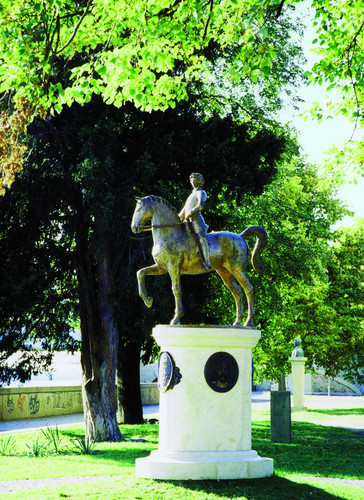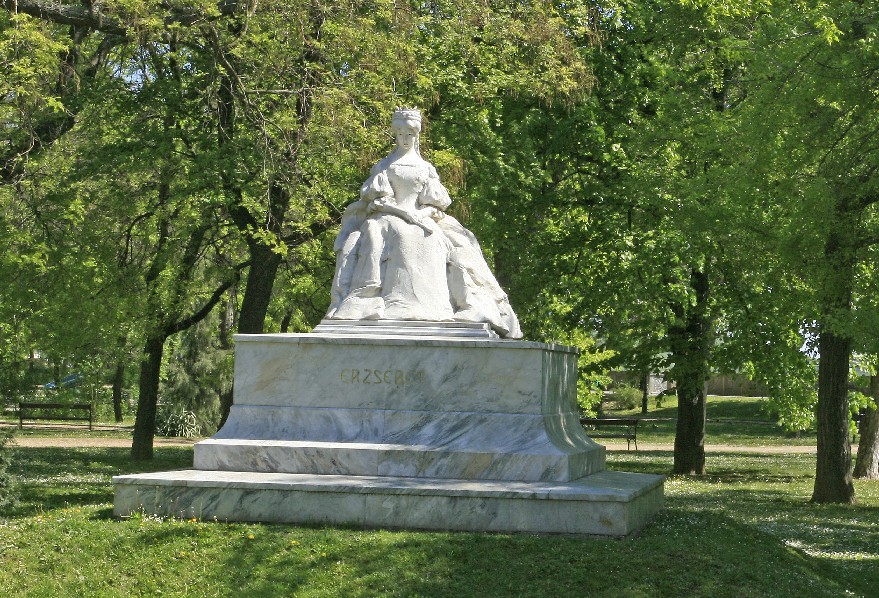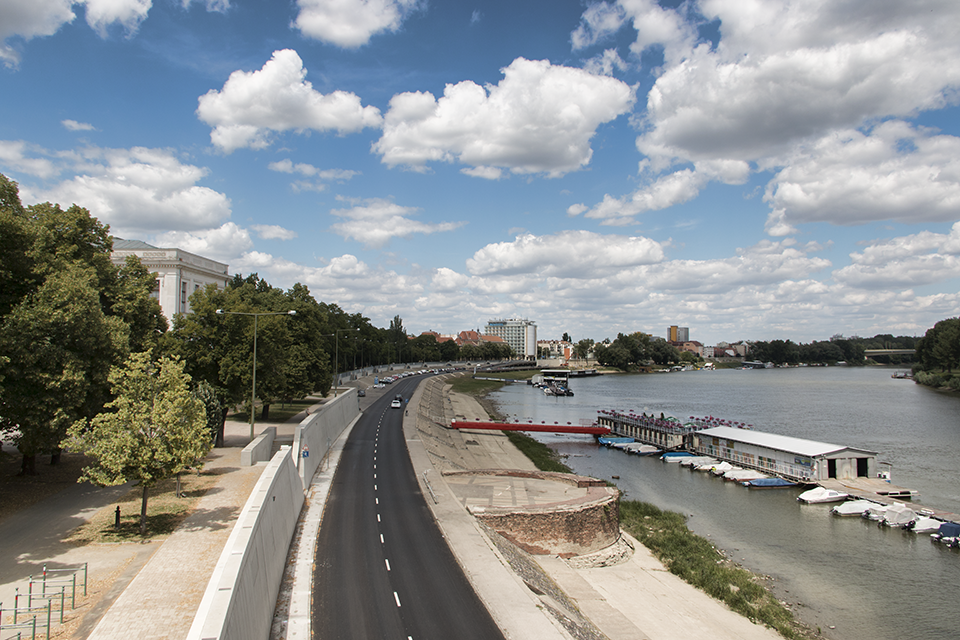You can see the remnants of the gate Maria Teresia of the former castle behind the museum. Its foundation corresponds to the ground level of the city before the Great Flood. The height of the aggradation is one meter and a half. The walls of the fortress from the bank of the River Tisza up to Széchenyi Square were almost all demolished after the flood and the remaining parts of the building became exhibition rooms belonging to the Móra Ferenc Museum. The Carrara marble statue of Queen Elisabeth by the sculptor Miklós Ligeti is in the neighbourhood. The River Tisza is the longest river in Hungary, it has its source in the Eastern Carpathians and it meets the Danube flowing through Serbia. The regulation of rivers was the biggest undertaking in the 19th century. It started in the 1840s on István Széchenyi’s initiative following the plans of Pál Vásárhelyi, a hydrographer. The river became navigable, its dried flooding territory was transformed into agricultural areas. Besides advantages there appeared disadvantages as well. The water of a river flows at a greater speed in a straight bed, so dangerous floods are more frequent. The largest disaster in the history of Szeged is the Great Flood happened in 1879, which completely destroyed the city. The present structure of the city with boulevards and avenues is a result of the reconstruction following the flood.
Stefánia









